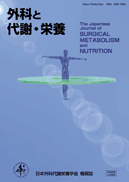Volume 56, Issue 4
Displaying 1-10 of 10 articles from this issue
- |<
- <
- 1
- >
- >|
-
2022 Volume 56 Issue 4 Pages 107-112
Published: August 15, 2022
Released on J-STAGE: September 15, 2022
Download PDF (1189K) -
2022 Volume 56 Issue 4 Pages 113-117
Published: August 15, 2022
Released on J-STAGE: September 15, 2022
Download PDF (851K) -
2022 Volume 56 Issue 4 Pages 118-123
Published: August 15, 2022
Released on J-STAGE: September 15, 2022
Download PDF (584K) -
2022 Volume 56 Issue 4 Pages 124-128
Published: August 15, 2022
Released on J-STAGE: September 15, 2022
Download PDF (703K) -
2022 Volume 56 Issue 4 Pages 129-132
Published: August 15, 2022
Released on J-STAGE: September 15, 2022
Download PDF (721K) -
2022 Volume 56 Issue 4 Pages 133-138
Published: August 15, 2022
Released on J-STAGE: September 15, 2022
Download PDF (977K)
-
2022 Volume 56 Issue 4 Pages 139-145
Published: August 15, 2022
Released on J-STAGE: September 15, 2022
Download PDF (820K) -
2022 Volume 56 Issue 4 Pages 146-154
Published: August 15, 2022
Released on J-STAGE: September 15, 2022
Download PDF (742K)
-
2022 Volume 56 Issue 4 Pages 155-159
Published: August 15, 2022
Released on J-STAGE: September 15, 2022
Download PDF (792K)
-
2022 Volume 56 Issue 4 Pages A56_4-
Published: 2022
Released on J-STAGE: September 15, 2022
Download PDF (649K)
- |<
- <
- 1
- >
- >|
